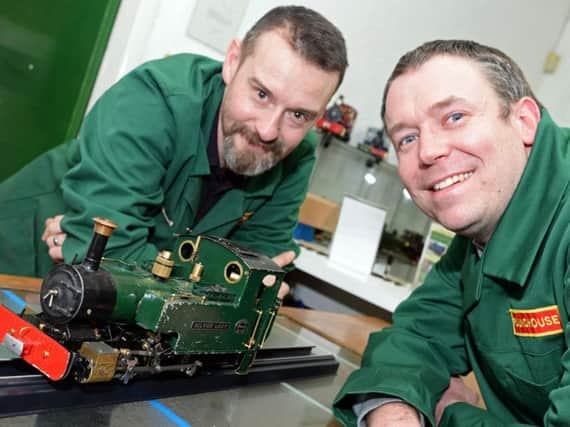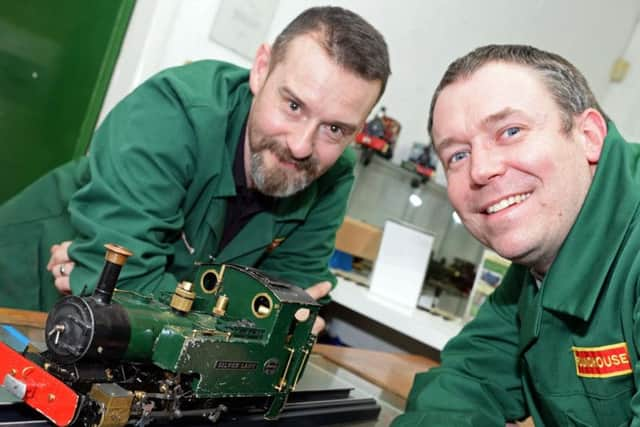Doncaster built steam loco Silver Lady town's latest celeb after Channel Four TV show


It may only be around a foot long, but the new name on the list is Silver Lady, after the steam-powered radio controlled scale model, built on an industrial estate off Wheatley Hall Road, became the biggest star of Sunday evening television to come out of Doncaster since Open All Hours.
The engine has featured for the last four weeks on the Channel Four show The Biggest Little Railway in the World, as teams of volunteers, plus 36-year-old Doncaster engineer Christopher Lee, have been working to try to get it across 72 miles of track set up along difficult terrain in the Scottish Highlands.


Advertisement
Hide AdAdvertisement
Hide AdThe project aimed to take the tiny engine across a route on which engineers where unable to complete a full size railway many years ago because of the tough engineering challenges it presented.
The final episode of the five-part series will be broadcast this Sunday evening.
But regardless of whether it turns out that the little model engine manages to complete the route in the nine days that were allowed for the task on the show, bosses at Roundhouse Engineering Co, who manufactured the engine on the Churchill Road Industrial Estate, reckon their piece of engineering is a winner.
It now sites in pride of place on a shelf at the factory, which employs 20 people, and its appearance has already inspired a flurry of orders for identical model locos.


Advertisement
Hide AdAdvertisement
Hide AdDuring the time during the summer when four teams volunteers were laying track for the engine, Christopher, from Warmsworth, was on hand to fix any problems that the rigours of the route caused.
He even got it working again after it had ditched in a canal, and had to be rescued by a lock-keeper.
"I had to make sure it was in a fit state to keep going," he said. "We've heard of our engines ending up in garden ponds a couple of times, but this was the first time one had been in a canal as far as we know.
"But I think where ever Silver Lady has gone, she has managed to get through more than any of our engines have had to go through in their lifetime. When I think about it, it was crazy what it went through, but the great thing was it performed really well."
Advertisement
Hide AdAdvertisement
Hide AdChristopher's efforts to get the engine through whatever the volunteers put it through have regularly put him on the screen - but he said he had not yet been recognised in the street.
"It was great - I'd do it again," he added.
Roundhouse, set up in Hexthorpe in 1982, at a site on Cherry Tree Lane not far from the Doncaster Plantworks where Flying Scotsman and Mallard were built, have been at their current site since 1990. They are though to be the last commercial builders of steam locomotives in the borough.
They build their engines from scratch, machining and casting their own metal components, and assembling them themselves. Only the radio control box which operates them is not made in Doncaster, and customers have included Prof Robert Winston and comedian Paul Merton.
They sell to rail enthusiasts from as far away as Australia, America and Russia, with dealers all across the world, with customers paying up to £3,800 for their top of the range model. The cheapest steam loco they make costs £650 and is not radio controlled, although they also do a radio controlled . Silver Lady model retail for over £1,800.
Advertisement
Hide AdAdvertisement
Hide AdBut the battered Silver Lady used in the television show will not be sold - factory manager Harry Harrison said it would remain at the factory and put on display, and shown off at model shows across the country. Doncaster residents will have the change to take a look at her when the factory holds an open day on May 20.